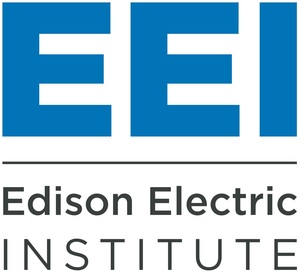EEI Discusses Consensus Approach to Meeting Air Quality Rule, Seeks Federal Energy Regulators' Support
WASHINGTON, Nov. 30, 2011 /PRNewswire-USNewswire/ -- The Edison Electric Institute (EEI) today presented to a federal regulatory panel the consensus views of its utility members on how to achieve compliance with a major air quality rule due to be issued by the U.S. Environmental Protection Agency (EPA) next month, while assuring continued reliability of electric service. The rule, known as the "utility MACT" (maximum achievable control technology), will impact 1,350 coal- and oil-based generating units at 525 power plants across the nation. The agency has proposed that all facilities must reach compliance within three years, with a conditional fourth year, once the rule is finalized.
"The three-year timeline is appropriate for instances in which facilities are planning to shut down and their closure does not cause a reliability problem," said Thomas F. Farrell, II, chairman and CEO of Richmond, Va.-based Dominion, and current EEI chairman. "However, given the large number of units affected and the complexity of some compliance measures, the compressed three-year time frame for compliance is not sufficient for facilities undertaking investments to control or replace units or which use new transmission facilities or natural gas pipelines as part of their compliance plan," he said.
"EPA can grant an additional fourth year and should do so categorically for plants undertaking such investments," Farrell said.
Farrell, testifying during a Federal Energy Regulatory Commission (FERC) technical conference on electric reliability and EPA regulation, also called on the President to issue an executive order under the Clean Air Act's two-year extension provision empowering EPA to provide more than four years to comply with the MACT rule in instances where:
- diligent measures are being undertaken to achieve compliance;
- the technology is not available for the installation of controls; and
- the appropriate RTO, state public utility commission or NERC determines that the time extension is necessary to ensure reliability or is consistent with a state-approved integrated resource plan or similar plan.
EEI also proposed that units that will not be retrofitted or replaced with new generation or transmission should retire within three years unless a state commission, an RTO or NERC determines that its shutdown would jeopardize reliability. This is similar to the so-called RTO "safety valve."
Commenting on Farrell's testimony, Lewis Hay, III, chairman and CEO of Juno Beach. Fla.-based NextEra Energy, also vice-chairman of EEI and a member of the President's Council on Jobs and Competitiveness, added: "Until a final rule and the rules for additional time are issued, companies cannot know the number of units that will be retired, those that will require equipment retrofits, and the number of new generating units and transmission upgrades that will be needed to comply with this one rule." He also underscored EEI member companies' commitment to meet their environmental obligations, while providing affordable, reliable power to customers. We are confident that this approach will ensure that our mutual goal of improving air quality and public health will be achieved, he said.
Farrell said that, "To do both, there must be a coordinated process to provide for an orderly implementation of the MACT rule and a reasonable opportunity for more time to comply, where needed. We must know how much time can be available at the time the final rule is issued."
Assuring reliability involves detailed analysis of the units that will be retired—utilities have announced about 48 gigawatts of coal retirements to date—and perhaps even more critical, coordination of the work required to retrofit units.
"One of the biggest risks we face is trying to coordinate the installation of compliance actions affecting 1,350 units in three or four years," Farrell said. He noted that organizations such as NERC and many RTOs have focused on the importance of coordinating the installation of equipment needed for compliance. (This coordination must include the active participation of utilities, public utility commissions, regional transmission organizations, and NERC regional entities. These entities will vary according to the market and regulatory structure of different regions.)
Farrell therefore recommended that regional transmission organizations (RTOs), planning authorities and the North American Electric Reliability Corporation (NERC) conduct comprehensive assessments to evaluate potential electric reliability and other potential impacts of individual utility compliance plans. An individual utility may understand the consequences of their compliance plan on their system. However, they have no way of knowing the compliance plans of neighboring utilities and how they may interact and affect system-wide reliability.
Finally, Farrell acknowledged that FERC had no authority to grant extensions of time for MACT compliance deadlines. "But, we respectfully urge the Commission to fully exercise its duties to ensure the reliability of the electric grid," Farrell said. "This can be accomplished by advising the Executive Branch that compliance activities can take more than three or four years to accomplish, that reliability impacts can result from uncoordinated implementation—thereby necessitating a categorical fourth year for units investing in compliance measures—and that the President should delegate his two-year extension authority under the Clean Air Act at the time the final MACT rule is issued."
Echoing this point, Hay said: "I urge the President to use his authority under section 112 (i)(4) of the Clean Air Act to provide the confidence and certainty that our customers deserve and expect."
The Edison Electric Institute (EEI) is the association of U.S. shareholder-owned electric companies. Our members serve 95 percent of the ultimate customers in the shareholder-owned segment of the industry, and represent approximately 70 percent of the U.S. electric power industry. We also have more than 65 International electric companies as Affiliate members, and more than 170 industry suppliers and related organizations as Associate members.
SOURCE Edison Electric Institute
WANT YOUR COMPANY'S NEWS FEATURED ON PRNEWSWIRE.COM?
Newsrooms &
Influencers
Digital Media
Outlets
Journalists
Opted In





Share this article